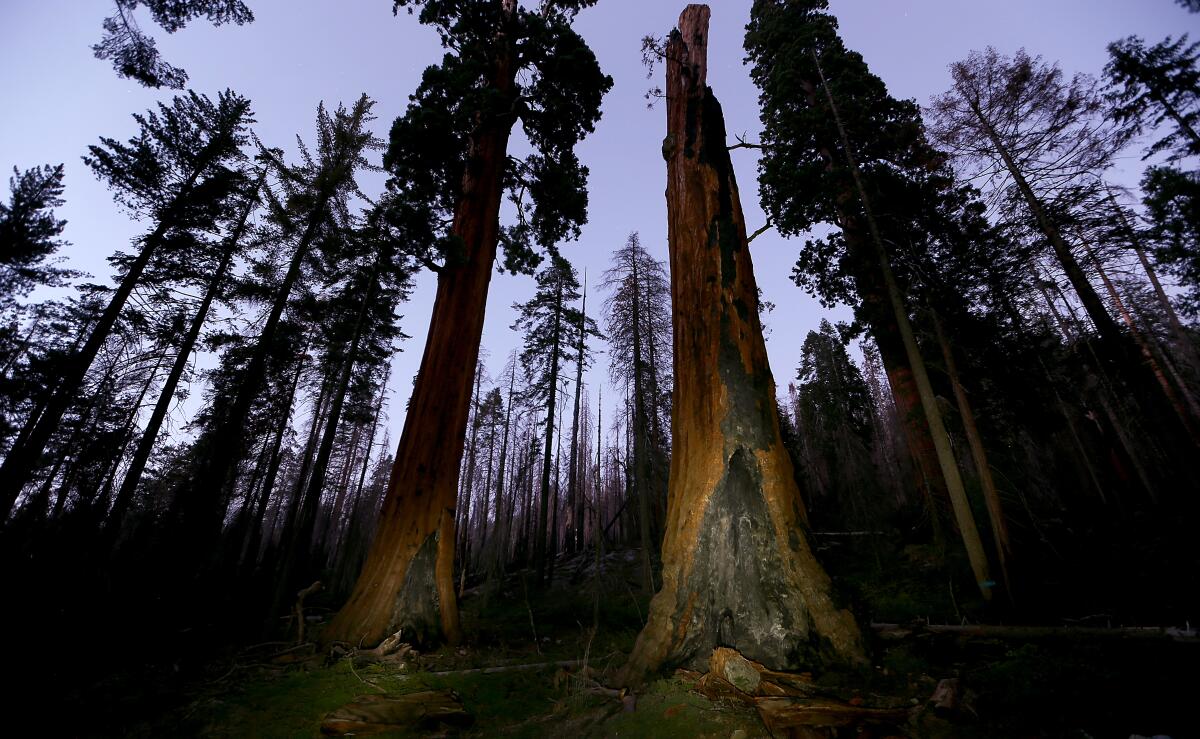Letters to the Editor: ‘Zombie’ forests in the Sierra Nevada are a sign of the climate emergency

- Share via
To the editor: Wrenching! Seeing the front-page photo of “zombie forests” in the Sierra Nevada saddened me greatly, as a Californian and as an environmental historian.
Last year at this time, my wife and I visited Yosemite’s Mariposa Grove, our “holy of holies.” Of course, we were inspired as always by the ancient sequoia trees. But the experience was rendered bittersweet by our seeing so many charred trunks of trees that did not escape the flames of recent mega wildfires.
These magnificent trees grow in few places globally. Their continued existence is threatened by human-caused carbon emissions that climate scientists link to the intensity of wildfires. Many economists recommend a carbon fee, with rebated proceeds to taxpayers, as the most efficient way to reduce climate-warming emissions.
We must decarbonize fast before it’s too late for the Sierra forests — and us.
Tom Osborne, Laguna Beach
..
To the editor: Your article made no mention of excessive logging. About 6% of the nation’s diverse, native, old-growth forests remain. Those that survive are vulnerable, since most of our big trees have been chopped down.
There are plenty of examples: California’s north coast has seen massive destruction of redwood trees and dry conditions. That is creating a feedback loop, which is already causing higher annual tree death rates.
We are headed to a system that no longer supports large trees, which cool the climate and resist wildfire. Modest-sized trees are sitting ducks.
Mike Roddy, Alameda, Calif.
..
To the editor: Two articles on your Nov. 2 front page — on the Sierra’s “zombie” forests and increasing support for clean energy projects — illustrate both the urgency of addressing climate change right now and the willingness of people to do so.
The Inflation Reduction Act will make a big difference once funds for energy efficiency rebates are available in 2024. And, L.A. leaders recently announced a plan to accelerate the city’s reduction in greenhouse gas emissions before the 2028 Summer Olympics.
Yet all around us we see business as usual. What’s missing is the urgency and the speed to make changes now through all sectors of society.
Countless options are available: Putting a price on carbon. Conserving resources. Developing sustainable transition policies. Acknowledging our climate emergency. Getting involved with this issue locally or nationally.
We can actually deal with this monster if more of us step up and make our voices heard.
Meredith Rose, Pasadena






